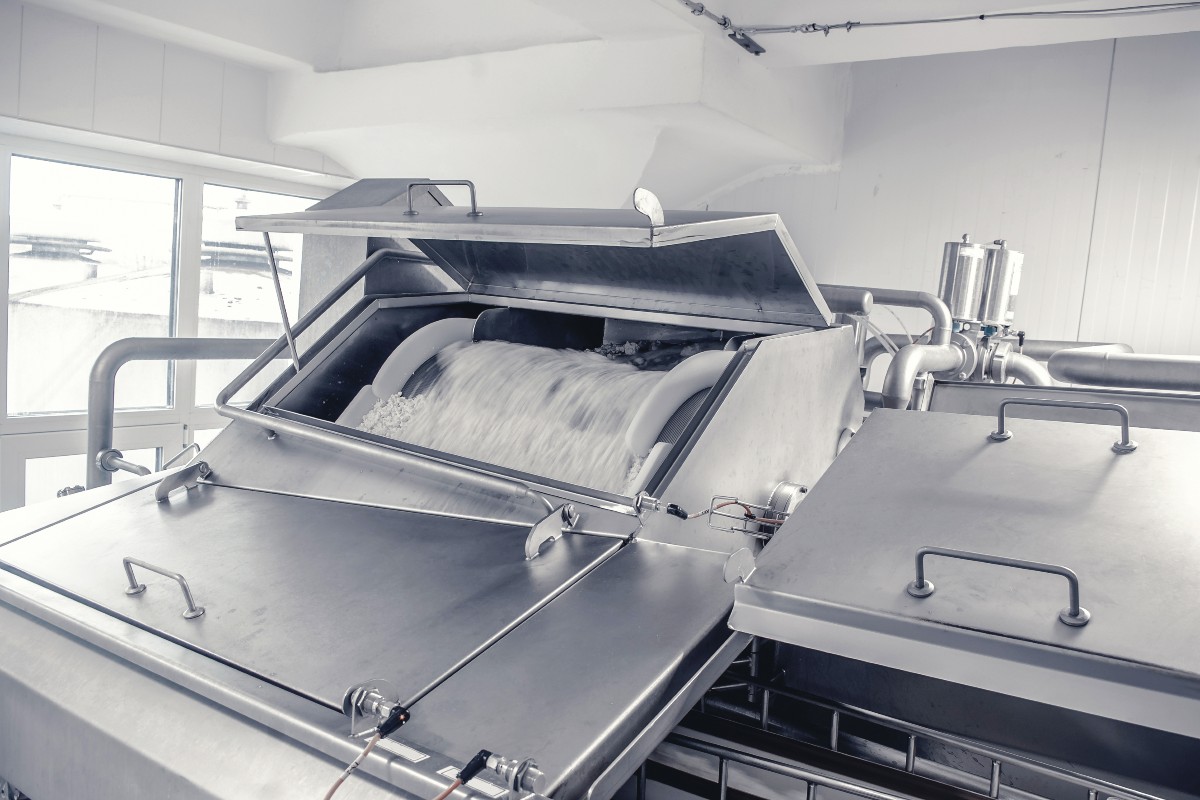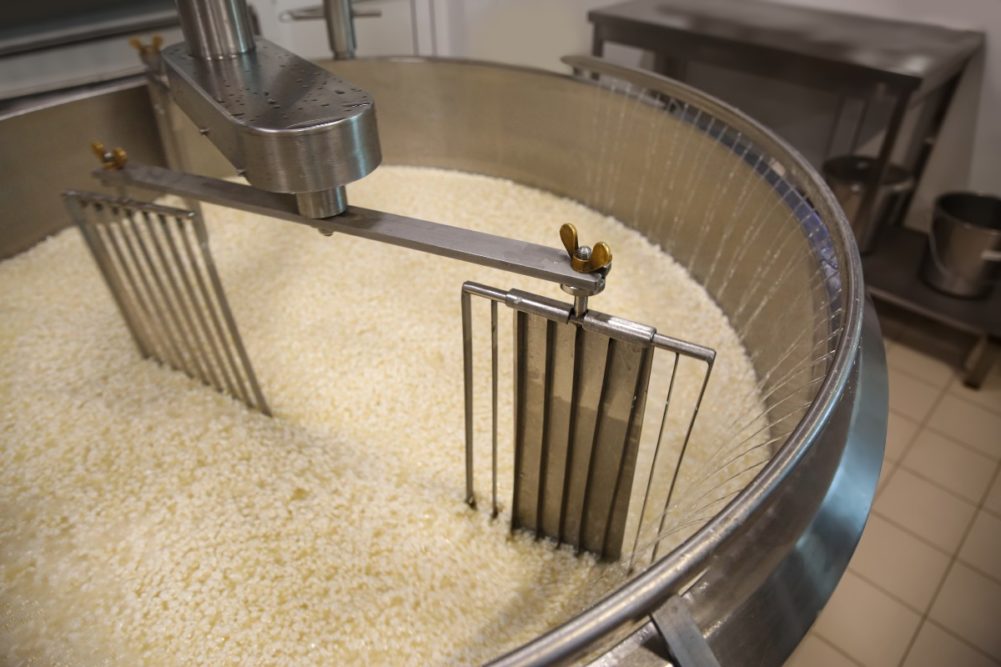While water is essential to all functions of life, it is also a scarce resource.
In dairy processing, a substantial amount of water is used for operations, cooling and cleaning. As a result, processors are implementing innovative solutions to minimize water use throughout processing while also recovering wastewater for reuse.
Optimized technology
Optimizing water use upstream is key to reducing wastewater as plants take in a significant amount of water to clean equipment, said Andrew Smits, corporate account manager with Saint Paul, Minn.-based Ecolab. To that end, the company has automated solutions to analyze the water coming into a facility so processors can use it in an optimal manner.
“We have ways to computer model water so we can determine the chemistry that’s required,” Smits said. “We can tell when we’re going to be putting your system into too much stress, where we could potentially reduce asset life or reduce efficiency to operate just below these limits.”
Making sure boilers, cooling towers and chilled water systems are being managed optimally is important, as well, and automation also plays an important role in these processes.
Nalco Water, an Ecolab company, offers 3D TRASAR technology for wastewater, allowing companies to automate chemical treatment of water in real-time while also allowing for remote monitoring and alarming. The technology was implemented at a Nestlé milk plant in Brazil, allowing for the reuse of condensate organic water steam generated during powdered milk production. When the solution was combined with other pre-treatment and heat recovery technology, the plant was able to save more than 175,000 cubic meters of freshwater and eliminate 25,000 cubic meters of wastewater effluent.
“When we get all that data, we can tell you how much water you use per clean-in-place, how much chemical you use per clean-in-place, how much that one unit operation costs and how much water was consumed,” Smits said. “We can go down to that granular level to be able to help optimize a program within a facility.”
As milk is about 88% water, a large part of Smits’ focus is to use water from milk and repurpose it either for boilers, in a cooling tower or even a rinse on a CIP.
“Every gallon of water that we can pull out of the milk or milk processing is a gallon of water you don’t need to take from the city or your wells,” Smits said.
Minimizing disinfectant byproduct is another area of innovation for Ecolab. The company is also focusing on adding fit-for-use automation to plants where more full-featured automation didn’t make sense in the past, allowing processors to manage assets from an individual unit level up to an enterprise level.
While optimizing upstream is of critical importance, recovering wastewater is also essential.
“The question is how do we recover this water back to the best extent possible so this water can go back in the treatment system and become usable,” said Dinesh Gehani, regional product sales manager for GEA’s Asia/Pacific region.
GEA’s Centrifuge Water Savings Unit plays a role in answering this question, allowing processors to save around a million liters of fresh water per year through reuse and recycling.
Another component of optimizing water use in a processing plant is to ensure boilers are using water responsibly. As opposed to the common fire tube boilers, Miura produces a modular boiler that allows for rapid startup and shutdown. This means less water is used while the boiler is building up pressure because it’s simultaneously draining condensation from the steam lines. Less water content in the pressure vessel also means less blowdown water goes to waste, and reduced water content means less water to drain when the boiler undergoes scheduled maintenance.
Additionally, the company will soon be releasing a new boiler designed for maximum overall efficiency and specifically designed for customers in California operating under stringent carbon emissions regulations.
 Photo: romankrykh - stock.adobe.com
Photo: romankrykh - stock.adobe.comAchieving results
As technologies improve, processors are seeing first-hand the possibilities in reducing water consumption.
Saputo made a commitment in 2020 to improve its global water performance by 2025, which involves reducing the water intensity of its operations by 10%, as well as improving its wastewater quality year-over-year. In fiscal year 2022, the company installed a water polisher system at a California plant that captures, cleans and reuses water. This innovation will allow the plan to reduce water by more than 335,000 cubic meters per year, which represents 134 Olympic-sized swimming pools or 2% of the company’s global footprint.
In fiscal year 2023, Saputo also invested in 12 additional projects across its operations that have the potential to save more than 1 million cubic meters of water each year.
Agropur has been able to minimize wastewater by using automation for product recovery, said Ted Winkelman, director of environmental compliance. This includes monitoring conductivity and flow rates and ultraviolet technology for diversion. Lines are flushed of chemicals, and final clean-in-place rinses are recovered for pre-rinse use when possible. Technologies such as Hydrite’s Optimax system allow the company to monitor clean-in-place processes for chemical use and proper dosing. Advances in membrane technologies and capability improvements around controls and monitoring systems also help the company reduce wastewater.
Product recovery for reuses in animal feed, anaerobic digestor feedstock and fertilizer applications are another initiative at Agropur. The company is also evaluating brine reuse for de-icing on roadways and hide tanning with plans to install a brine recycling project in 2024 at the company’s Weyauwega, Wis., facility. The company is also using condensate of whey water whenever possible as a replacement for fresh water.
“Less water to purchase and treat all leads to lower operational expenditures,” Winkelman said. “It gives us the ability to grow the business with limited impact on existing permits with federal, state and municipal governments. Limited loss of product to the drain has a direct financial impact to the bottom line of sellable products, as well as lower operational expenditures related to chemical use, energy and sludge or waste disposal.”
Denali Water Solutions, Russellville, Ark., has experience working with dairy processors on dewatering and dissolved air flotation systems to minimize wastewater, said Phil Collins, senior national account executive.
“Done properly, dewatering and DAF systems can greatly reduce the amount of water that leaves a facility as waste,” Collins said. “This decreases the weight and volume of waste materials that need to be trucked, reducing costs for all involved. With the costs associated with water reduced, we can harness the value of the solids content, such as by converting whey into a feed additive for swine.”
In recent years the company has worked with a major cheese manufacturer to divert packaged cheese from waste into animal feed.
“This project, in addition to our work with another one of the country’s largest cheese manufacturers, has kept more than 4 million pounds of waste out of landfills,” Collins said. “This material has instead stayed in our food system, nourishing animals and, ultimately, people.”
Setting the bar
While the current innovations have allowed for many achievements, opportunities for additional innovation abound.
More cost-effective ways to implement wastewater reduction, reuse and recycling will be important as it’s still cost-prohibitive to implement many of these measures, Winkelman said.
“We would like to see desalination systems for brine that are cost effective, as well as means to harvest energy from biosolids that are leaving the site,” Winkelman said.
The industry could also benefit from more functional and cost-effective technologies to recycle chemicals, including the reuse of caustic materials or acids, Winkelman said. Overall, Agropur has been able to decrease its biological oxygen demand as well as decrease its total suspended solids, phosphorus, chlorides, and ammonia.
Collins said more depackaging machines will be needed to further reduce overall waste. He said Denali is already offering this technology to many dairy processing customers, and it intends to expand this effort in the future.
Overall, Smits said the work to reduce wastewater involves constantly and continually optimizing to a greater degree the amount of water that goes through a plant and minimizing water consumption.

